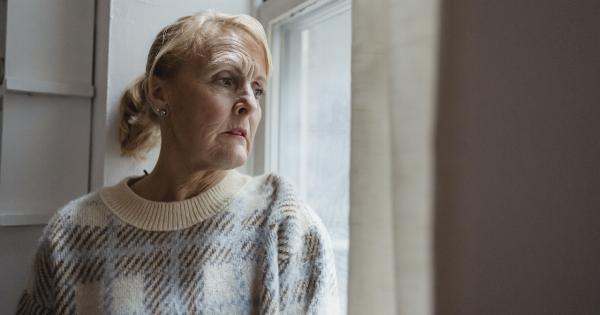Depression is a prevalent and often misunderstood mental health condition that affects individuals of all ages. While it is commonly associated with younger populations, depression among the elderly is a growing concern.
As people age, they may face various physical, emotional, and social challenges that can contribute to the development of depression. In this article, we will delve into the causes, signs, and potential treatment options for depression in the elderly.
1. Understanding Depression in the Elderly
Depression is more than just occasional sadness. It is a persistent feeling of sadness, hopelessness, and emptiness that can significantly impact an individual’s quality of life.
Among the elderly, depression often goes undiagnosed and untreated due to a variety of factors, including the misconception that it is a natural part of aging.
2. Causes of Depression in the Elderly
Several factors can contribute to the development of depression in older adults. One of the primary causes is the loss of a loved one, such as a spouse or close friend.
The grief and loneliness that accompany such losses can take a toll on mental well-being. Additionally, health issues, chronic pain, limited mobility, and financial difficulties can contribute to feelings of depression.
3. Signs and Symptoms
Recognizing the signs and symptoms of depression in the elderly is crucial for early intervention.
Common symptoms may include persistent sadness, irritability, loss of interest in activities, changes in appetite, sleep disturbances, fatigue, difficulty concentrating, feelings of guilt or worthlessness, and thoughts of death or suicide. It is important to remember that these symptoms may vary from person to person.
4. The Role of Social Isolation
Social isolation plays a significant role in the development and exacerbation of depression among older adults. With age, individuals may experience increased isolation due to the loss of close relationships, retirement, and reduced social interaction.
Loneliness and lack of companionship can intensify feelings of depression, making it crucial to address social factors when treating and preventing depression in the elderly.
5. Treatment Options
Treating depression in the elderly requires a comprehensive approach that addresses both the physical and emotional well-being of the individual. Treatment options may include psychotherapy, medication, and lifestyle modifications.
Psychotherapy, such as cognitive-behavioral therapy (CBT) and interpersonal therapy (IPT), can help individuals identify and manage negative thoughts, develop coping strategies, and improve social skills.
Medication, such as antidepressants, may also be prescribed in conjunction with therapy.
It is important to note that medication should be carefully monitored by a healthcare professional, as older adults may be more susceptible to side effects and medication interactions.
Lifestyle modifications, such as regular exercise, maintaining a balanced diet, and engaging in meaningful social activities, can also contribute to alleviating symptoms of depression.
6. Importance of Support Systems
Support systems play a vital role in the well-being of elderly individuals with depression. Family members, friends, and healthcare professionals need to be aware of the signs of depression and provide support and encouragement.
Additionally, support groups, community organizations, and mental health services can offer valuable resources and a sense of belonging to those struggling with depression.
7. Prevention Strategies
Prevention is key when it comes to addressing depression in the elderly. Building strong social connections, maintaining a healthy lifestyle, and seeking treatment for underlying health conditions can help reduce the risk of developing depression.
Regular check-ups with healthcare providers can also ensure early detection and intervention if any signs of depression arise.
8. The Importance of Mental Health Education
Mental health education is crucial for detecting, understanding, and addressing depression in the elderly effectively.
By increasing awareness and reducing stigma surrounding mental health issues, individuals, families, and communities can work together to provide the support and resources needed to combat depression among the elderly.
9. The Role of Caregivers
Caregivers play a crucial role in the lives of elderly individuals with depression. They must recognize the signs of depression, provide emotional support, and encourage treatment.
Caregivers may also need to seek support for themselves to prevent burnout and ensure they can fulfill their caregiving responsibilities effectively.
10. Conclusion
Depression among the elderly is a widespread and often overlooked condition. Understanding the causes, signs, and treatment options for depression in older adults is essential for fostering mental well-being in this population.
By addressing social isolation, providing support, and promoting mental health education, we can contribute to a healthier and happier aging population.































